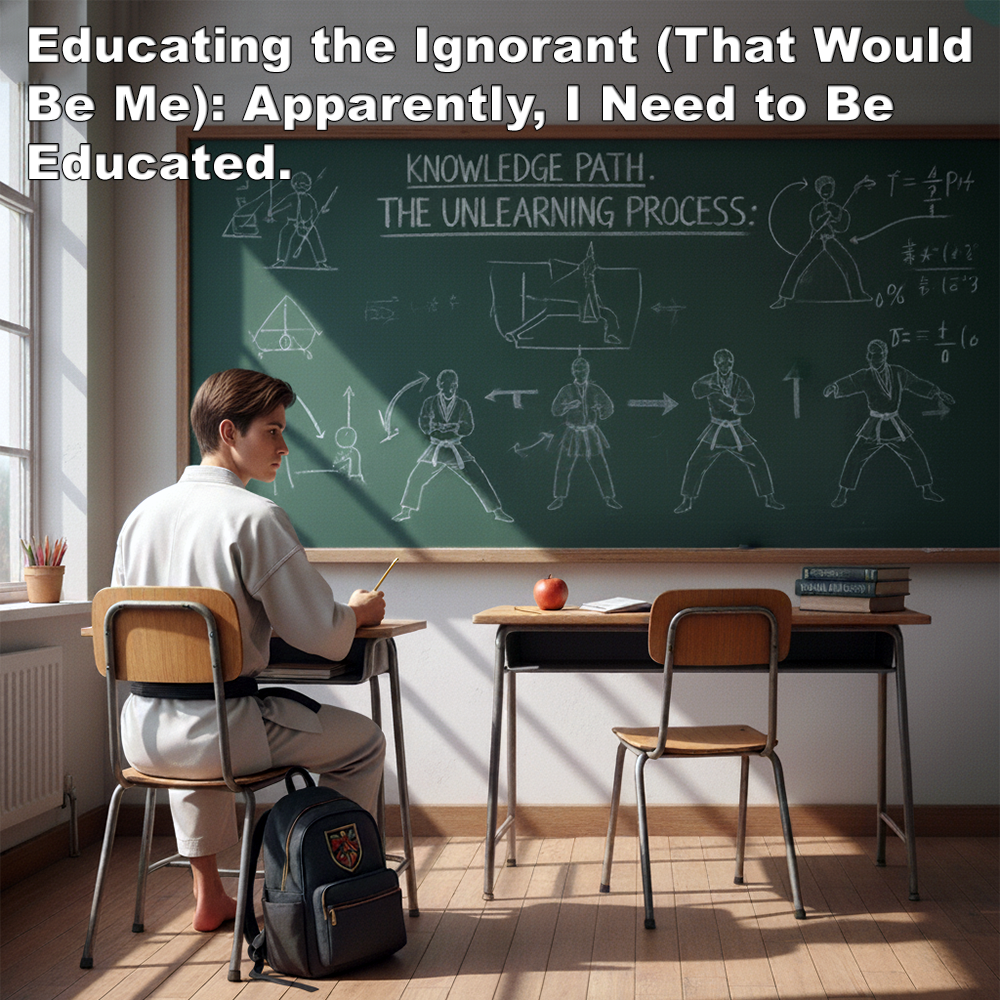
(Approx 2 minute 50 second read)
Apparently, I need to “be educated”.
.
The saga about step-kumite will not leave me alone, it seems. Another high-ranking instructor from a well-known association sent me a Facebook message to tell me how wrong I am because, wait for it… step-kumite was never designed to be effective (in self-defense).
.
Okay then, so you’re confirming my hypothesis?
.
If that’s the case, what is it for? Bear with me while I ruminate.
.
What does the word “tradition” mean? We all know what it means, and yet it seems to stir up so much controversy.
.
A bunch of techniques? A methodology? Is this something we even give much thought to? I suspect most of us just do it because “that’s the way it’s done.”
.
It’s well established that karate became available to the general public in the early 1930s. Prior to that, it was closely held and only taught to a select few. When karate was first introduced to schools, it had to be structured for large groups.
.
The format promoted character development, self-discipline, physical fitness, and self-confidence. These were the selling points to convince school administrators to accept karate practice.
.
This version of karate, the one made available to the world, was designed for school kids. It specifically wasn’t designed to hurt people. That stands in vivid contrast to the earlier version, whose primary purpose was to disable an opponent.
.
“The ultimate aim of karate, therefore, lies not in victory or defeat, but in the perfection of the character of its participants.” Heard that before? Notice it has nothing to do with being effective in combat. Notice that it specifically says the aim does not include victory or defeat, the very essence of combat.
.
When karate was taught in schools, instruction had to be formal and structured. Like any contact activity, it needed control and discipline to keep things safe and organized in large groups.
.
So what we have is a program designed to promote character development, taught in a militaristic manner. It accomplishes its goals, but it’s not taught the way it was originally.
.
And that’s okay.
.
So how does this relate to step-kumite?
.
Let’s look at content, what’s being taught rather than how it’s taught.
.
A typical karate class emphasizes form, physical fitness, conditioning, strength, and speed. Students work on basics, partner drills, kata, and sparring. We teach good form first.
.
What constitutes good form? It’s a prescribed movement that must be duplicated precisely. The emphasis is on performance. The goal is to match a standard. That is the art.
.
It often revolves around locking the stance, locking the technique, and showing proper delivery and focus.
.
So what we do is take a number of techniques, selected specifically not to hurt the original school-age participants, and train to do them with improved form, power, and speed.
.
But here’s the crux of the matter: no one ever really told anyone that what they were investing all this blood, sweat, and tears into wasn’t the original, practical stuff. They just assumed it was. They were told it was “traditional”, and it was. It still is. Just not effective in the real world.
.
If I’m being told I need educating on what step-kumite isn’t… then why do so many still defend it as a progressive drill, when it clearly was never intended for self-defense?
.
The facts are clear. All you have to do, those who teach this stuff, is be honest about what you teach. It’s not self-defense, never was, and has no relationship to it whatsoever. It’s really simple. Don’t advertise that it is, then people like me can crawl back under a rock and never talk about it again.
.
Just practice it for what it is. Honesty isn’t disrespecting tradition, it’s understanding it.
.
.
Written by Adam Carter – Shuri Dojo
